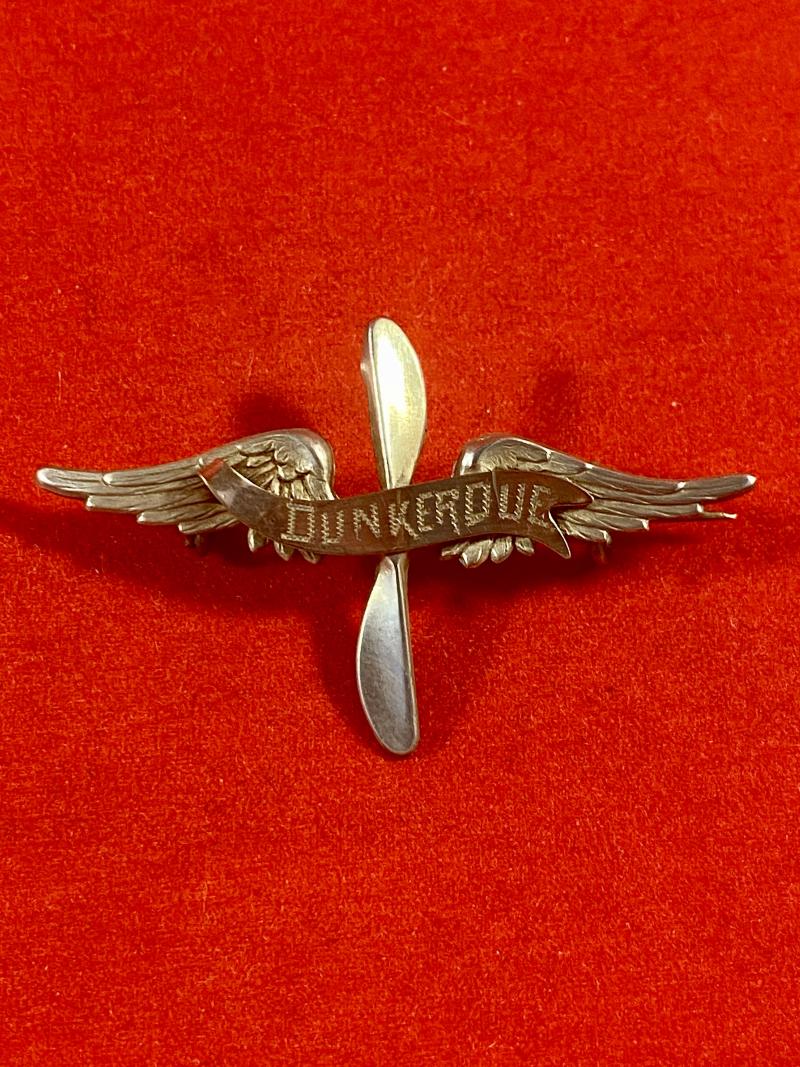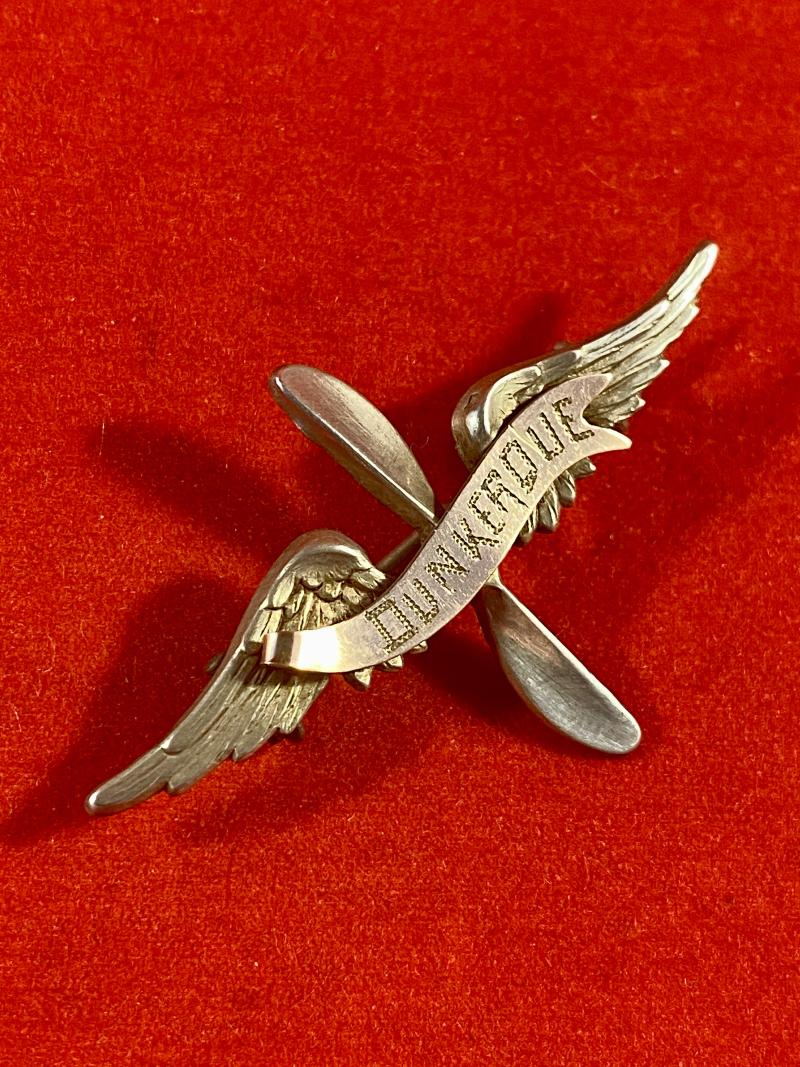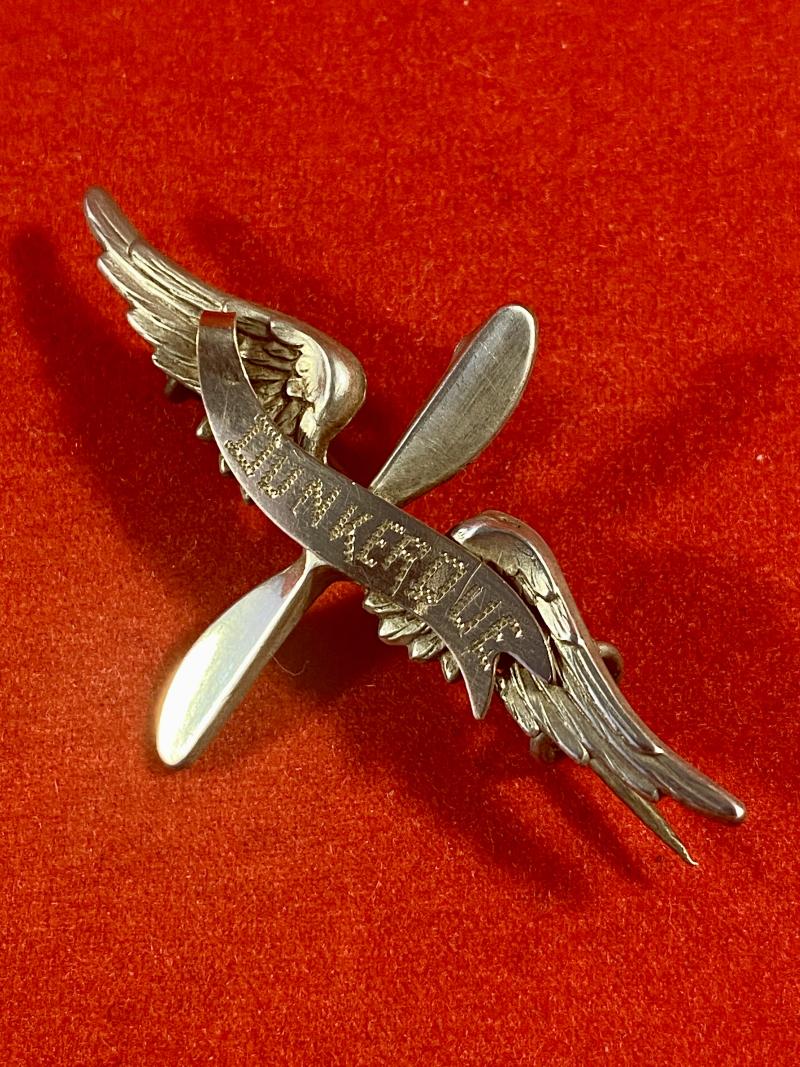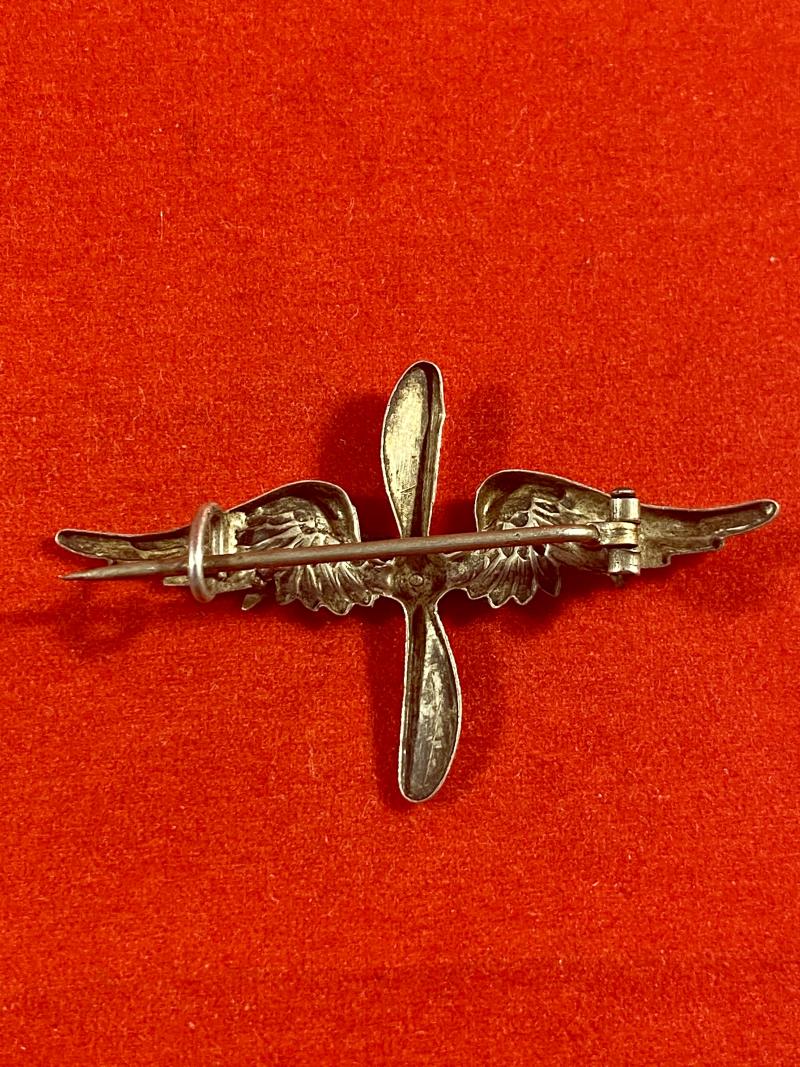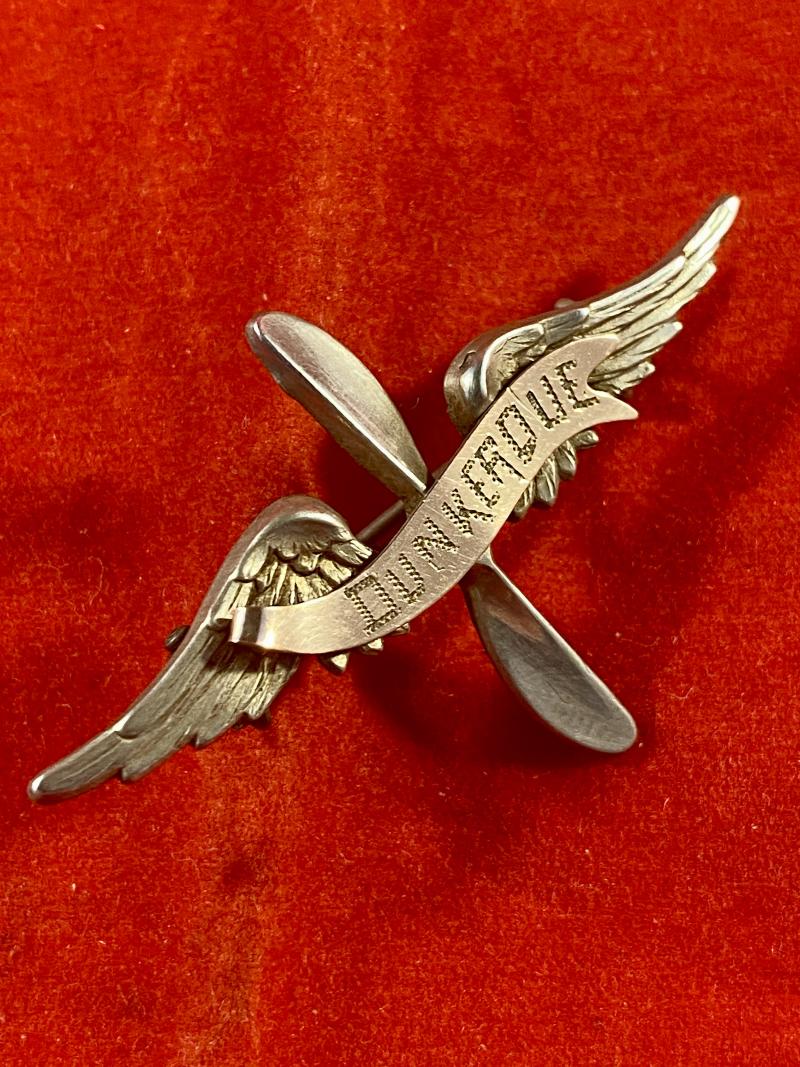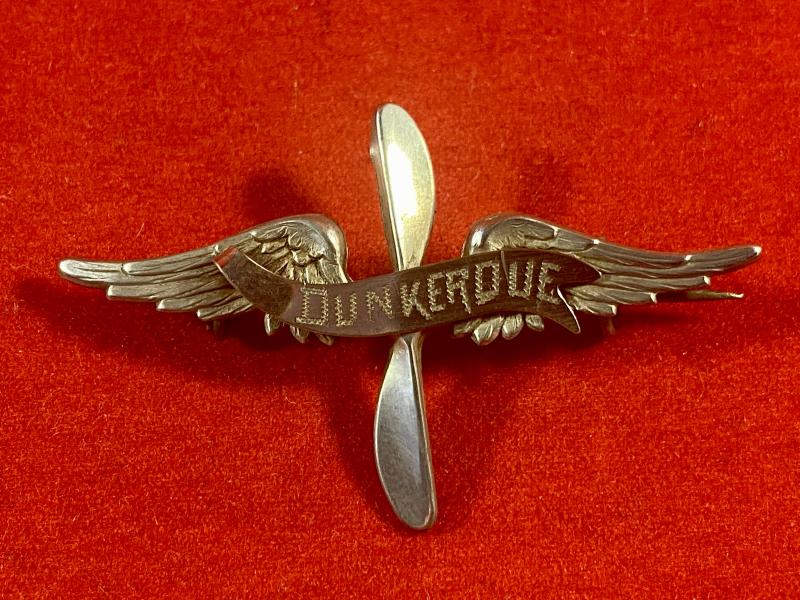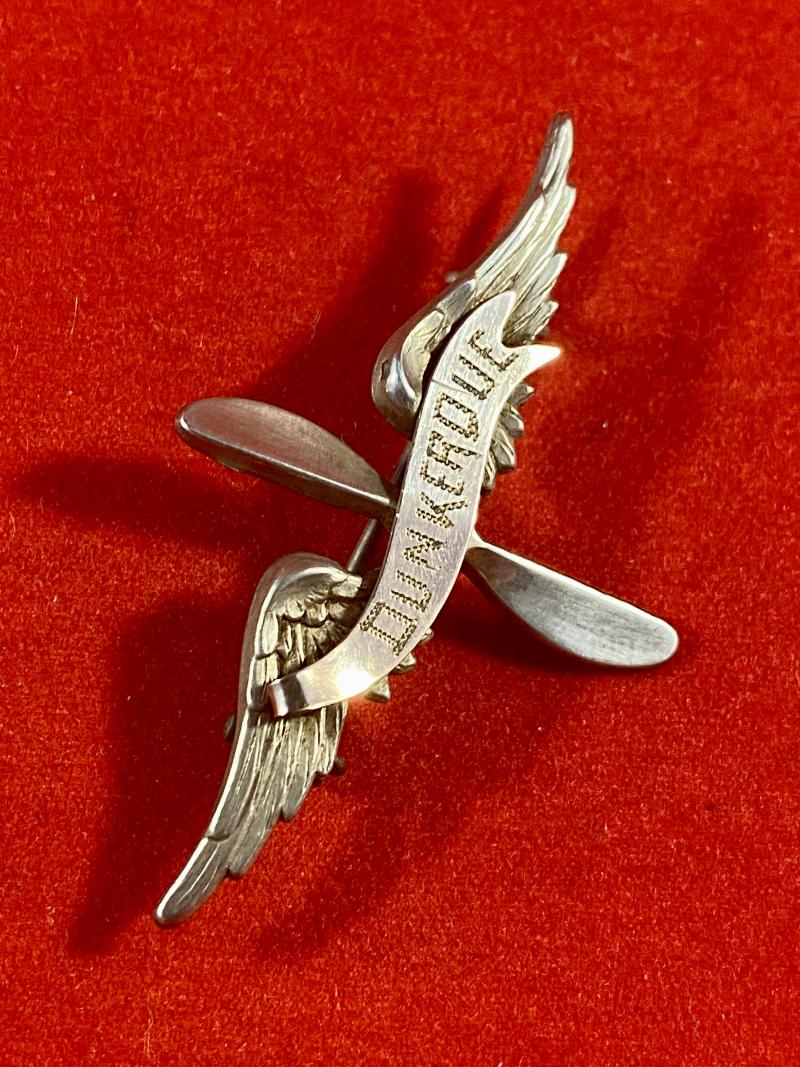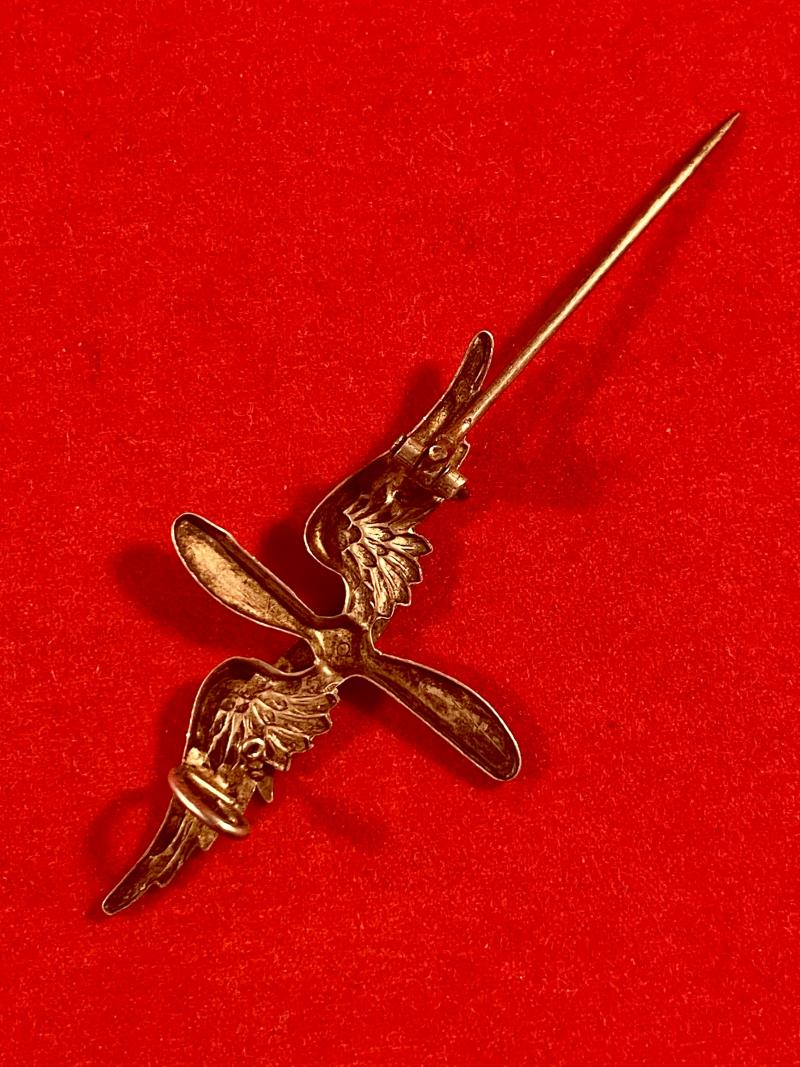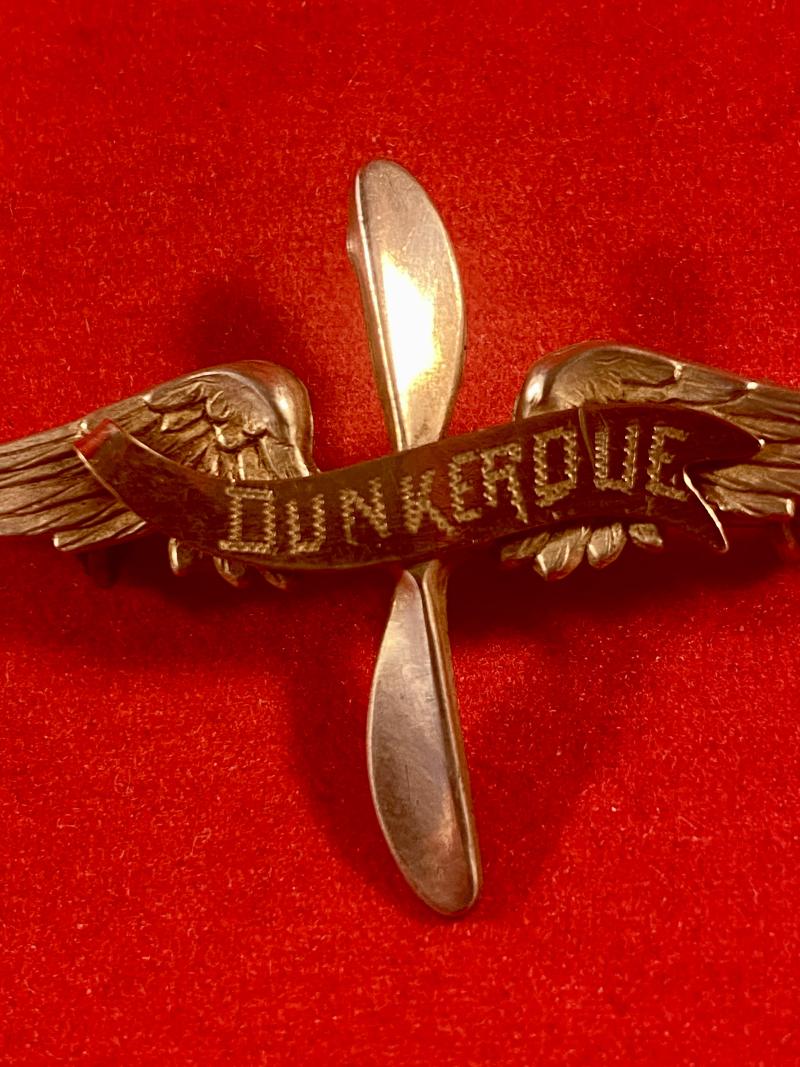Unusual WW2 USAAF Cadet Overseas Sweetheart Brooch - DUNKERQUE
Here on offer is an unusual WW2 USAAF cadet overseas insignia sweetheart brooch. These were worn by USAAF Flying School Cadets who has not yet become a graduated aviator or a commissioned flying officer.
The brooch, that has been made in the style of a WW2 USAAF cadet badge, with a propellor and detailed feathered wings. It appears made from a die stamped bright metal alloy or possibly 800 silver?
On the reverse it retains its original metal pin and clasp but there is no maker’s name.
What is unusual and puzzling is the rose gold ribbon attached to the front engraved with the name of the famous French port of Dunkirk:
DUNKERQUE (in French)
So why would a USAAF cadet pilot have a brooch memorialising DUNKERQUE and one assumes the famous WW2 battle/evacuation of allied troops in 1940, unless they actually took part in it?
The romantic in me thinks it is possible they were one of the very few American airmen who joined and flew with the RAF before the US entered WW2 in 1941?
Regardless of the what the film “Dunkirk” portrays, the RAF few many shorties over Dunkirk to provide what aircover they possibly could at the time. Could one of those brave RAF pilots been a US citizen?
However, under American law, it was illegal for United States citizens to join the armed forces of foreign nations. In doing so, they lost their citizenship, although Congress passed a blanket pardon in 1944. Even so, hundreds if not thousands of American citizens volunteered to fly with the Royal Air Force before America officially entered the war in December 1941. Perhaps the most famous result of this were the Eagle Squadrons.
In 1939 American mercenary Colonel Charles Sweeney had begun raising an American squadron to fight in Europe, much as the Lafayette Escadrille had during the First World War. Initially he wanted them to fight in Finland against the Soviets, but his attention soon moved to France. Recruited and financed by Sweeney, over thirty Americans made their way to France before the Germans invaded in May 1940. None got to fly in France, but several made their way to Britain.
In Britain Sweeney’s nephew, also called Charles, had already been busy. He had formed a Home Guard unit from Americans living in London, and was keen on the idea of American squadrons in the Royal Air Force. He took the idea to the Air Ministry, and in July, 1940, they agreed that the handful of Americans already serving in the RAF, plus any new recruits, would be formed into their own national units, to be known as Eagle Squadrons. The first, No. 71 Squadron, was formed in September, followed by Nos. 121 and 133 Squadrons over the next twelve months.
By this time the Sweeney’s had recruited around 50 pilots, and arranged and paid for them to be smuggled to Canada and then make their way to Britain. Now they handed responsibility over to the Clayton Knight Committee. This Committee, working like the Sweeney’s against American law, had been formed in September 1939, to recruit Americans for the RAF. It had been founded by Air Vice-Marshal Billy Bishop VC, a Canadian First World War veteran, and was run by an American First World War veteran, Clayton Knight.
The Clayton Knight Committee, working largely in secret, recruited nearly 7,000 American citizens for the RAF or Royal Canadian Air Force, and then arranged for their transportation to Canada. Nearly 250 went on to serve with the Eagle Squadrons. In December, 1941, the United States of America entered the war, and the Clayton Knight Committee ceased its operations.
The brooch is in excellent condition, if only it could tell its story!
It measures 1.9” (4.8cm) wide and weighs 2.3g.
Please see my pictures for the details of the condition, which complement this description.
Please see my TERMS OF BUSINESS regarding Deliver Charges and Insurance regarding additional insurance cover, should you require it, BEFORE the item is dispatched.
The responsibility lies with the customer to check with your Customs restrictions that this item can be imported into your country.
Code: 51198
45.00 GBP

